
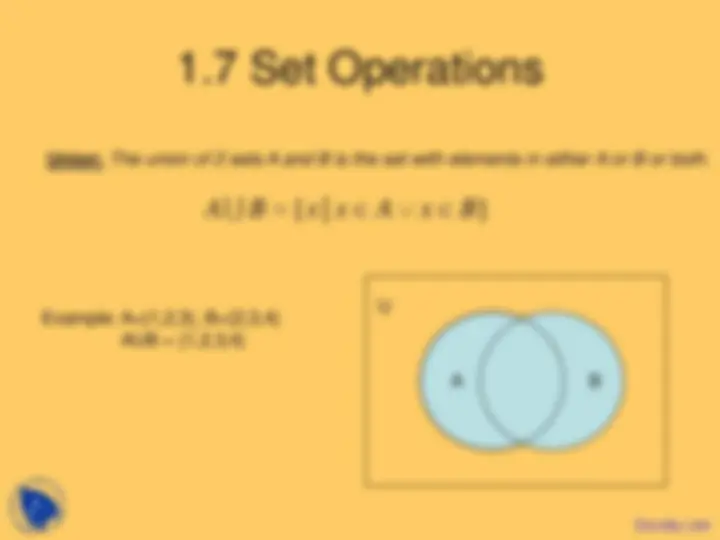
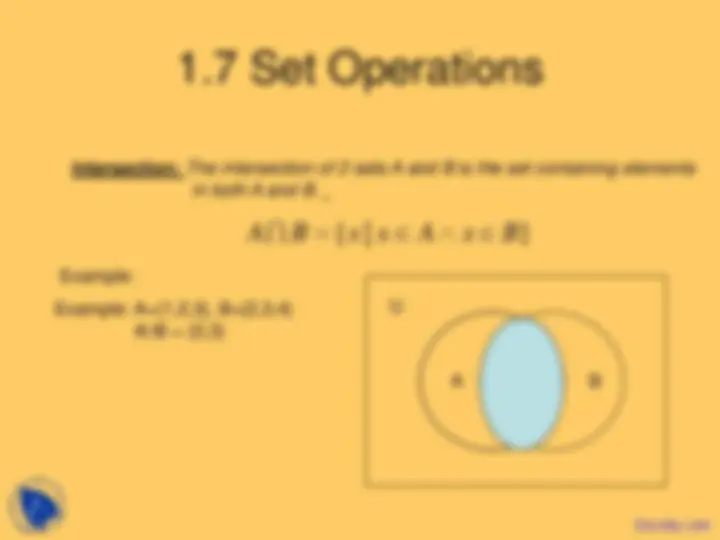
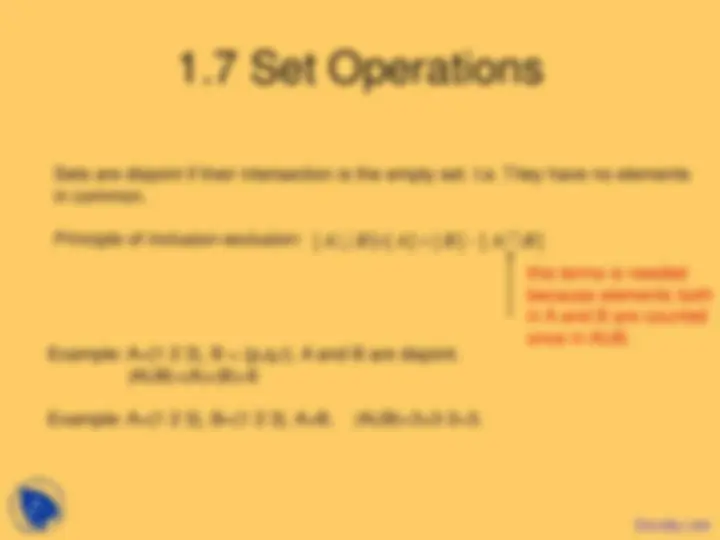
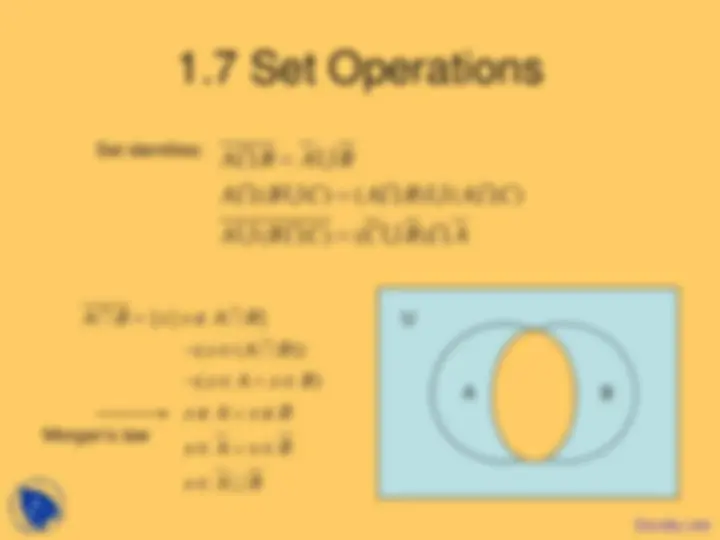
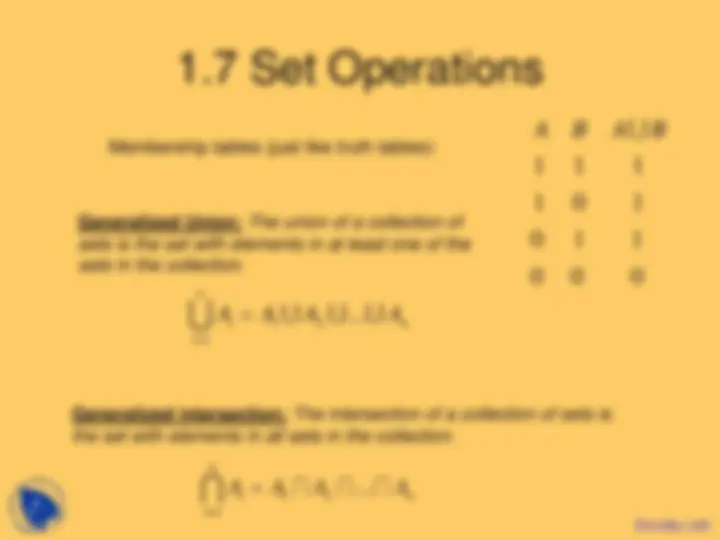
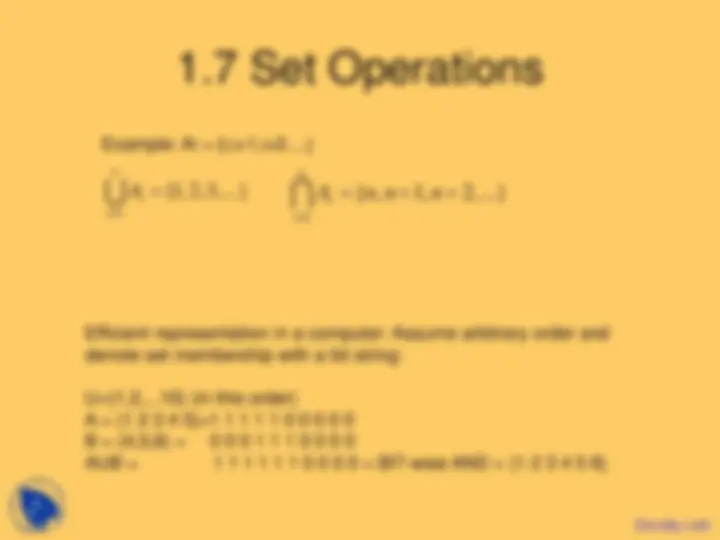
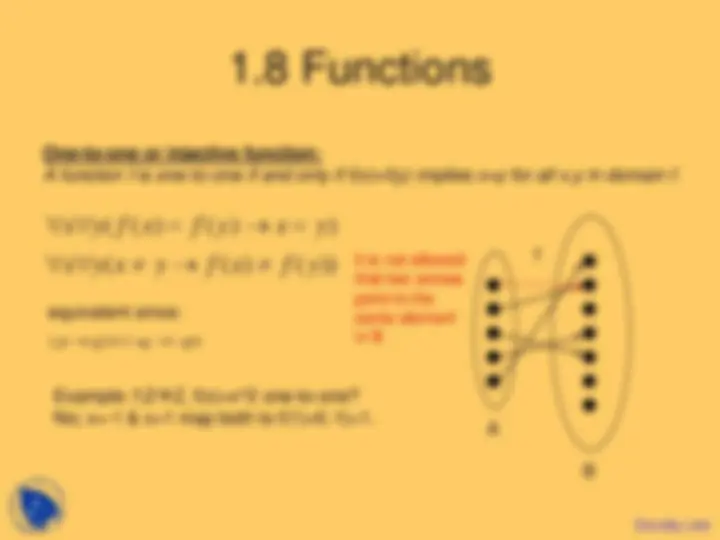
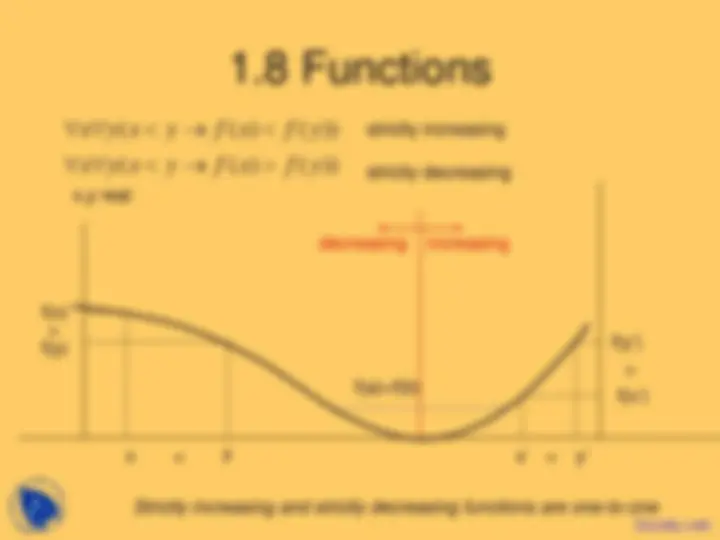
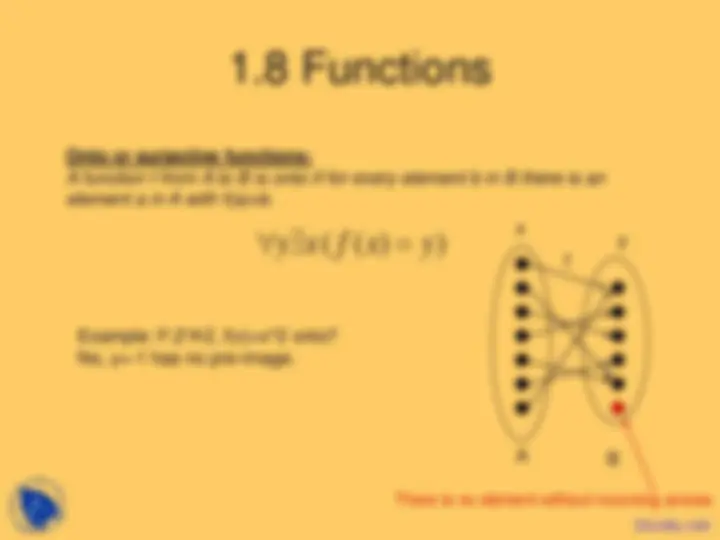
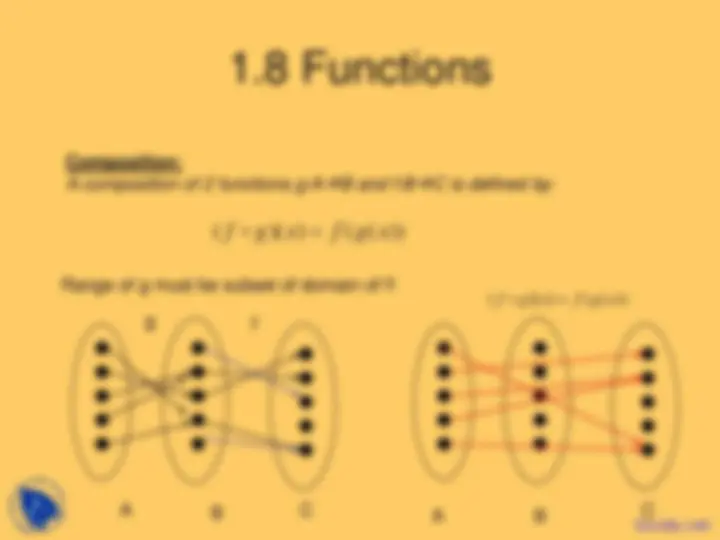
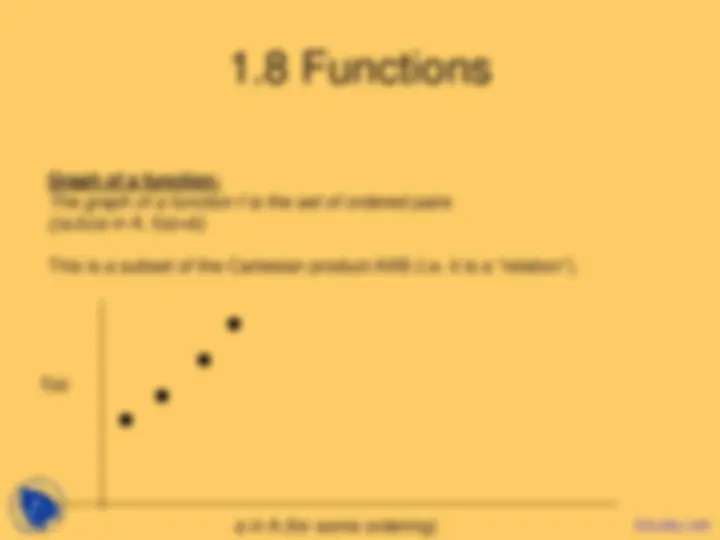
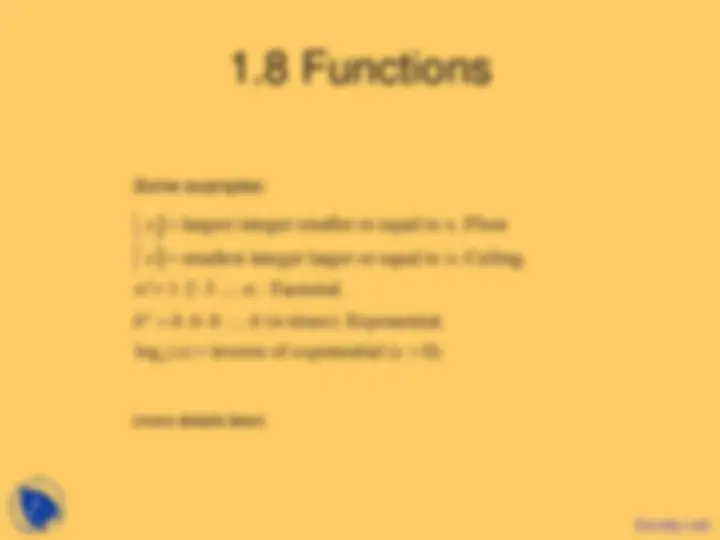


Study with the several resources on Docsity

Earn points by helping other students or get them with a premium plan


Prepare for your exams
Study with the several resources on Docsity

Earn points to download
Earn points by helping other students or get them with a premium plan
Community
Ask the community for help and clear up your study doubts
Discover the best universities in your country according to Docsity users
Free resources
Download our free guides on studying techniques, anxiety management strategies, and thesis advice from Docsity tutors
An overview of set operations and functions, including definitions, examples, and set identities. Topics covered include set intersections, unions, disjoint sets, differences, complements, and set identities. Additionally, the document discusses functions, their domains and co-domains, images and pre-images, and range. Morgan's law is also introduced.
Typology: Slides
1 / 20

This page cannot be seen from the preview
Don't miss anything!













Intersection: The intersection of 2 sets A and B is the set containing elements in both A and B.
Example:
Example: A={1,2,3}, B={2,3,4} A B = {2,3}
Sets are disjoint if their intersection is the empty set. I.e. They have no elements in common.
this terms is needed because elements both in A and B are counted once in AUB. Example: A={1 2 3}, B = {p,q,r}. A and B are disjoint. |AUB|=|A|+|B|=
Example: A={1 2 3}, B={1 2 3}. A=B. |AUB|=3+3-3=3.
Complement: The complement of a set A in U is the set U-A.
Example: U={x|x in English alphabet} A={x| x is consonant } A = {x|x is vowel}
Set identities:
( ) ( ) ( )
( ) ( )
A B A B
A B C A B A C
A B C C B A
=
=
=
{ | } U ( ( )) ( )
A B x x A B x A B x A x B x A x B
x A x B
x A B
= ∉ ¬ ∈ ¬ ∈ ∧ ∈ ∉ ∨ ∉
∈ ∨ ∈
∈
Morgan’s law
Efficient representation in a computer: Assume arbitrary order and denote set membership with a bit string:
U={1,2,...10} (in this order) A = {1 2 3 4 5}=1 1 1 1 1 0 0 0 0 0 B = {4,5,6} = 0 0 0 1 1 1 0 0 0 0 AUB = 1 1 1 1 1 1 0 0 0 0 = BIT-wise AND = {1 2 3 4 5 6}
Example: Ai = {i,i+1,i+2....}
1
{1, 2,3,...}
n i i
1
{ , 1, 2,...}
n i i
function: The assignment of exactly one element of the set B to each element
A is the domain of f. B is the co-domain. of f. b is the image of a. a is the pre-image of b. range of f: set of all images of elements of A.
range
co-domain
pre- image
f
a (^) b= f(a)
domain
image
Example: f:ZZ, f(x)=x^ domain/co-domain: Z range: perfect squares {0,1,4,9,...}
One-to-one or injective function: A function f is one-to-one if and only if f(x)=f(y) implies x=y for all x,y in domain f.
it is not allowed^ f that two arrows point to the same element in B
( p → q ) ≡ ¬( q → ¬ p )
equivalent since:
Example: f:ZZ, f(x)=x^2 one-to-one? No; x=-1 & x=1 map both to f(1)=f(-1)=1.
( ( ) ( ))
( ( ) ( ))
x y x y f x f y
x y x y f x f y
∀ ∀ < → <
∀ ∀ < → >
strictly increasing
strictly decreasing x,y real
x < y
f(x)
f(y)
x’ < y’
f(y’)
f(x’)
decreasing increasing
Strictly increasing and strictly decreasing functions are one-to-one
f(a)=f(b)
One-to-one correspondence or bijection: A function f is in one-to-one correspondence if it is both one-to-one and onto.
f
Number of elements in A and B must be the same. Every element in A is uniquely associated with exactly one element in B.
Example: f:RR, f(x)= -x bijection!
Inverse function: The inverse function of a bijection is the function that assigns to b in B the element a in A such that f(a)=b.
f −^1 : B → A , f −^1 ( ) b = a
inverse of f
f
If a function is not a bijection it is not invertible: example: f:rR, f(x)=x^2.
Graph of a function: The graph of a function f is the set of ordered pairs {(a,b)|a in A, f(a)=b}.
This is a subset of the Cartesian product AXB (i.e. it is a “relation”).
a in A (for some ordering)
f(a)
Docsity.com
n
b
Some examples:
(more details later)